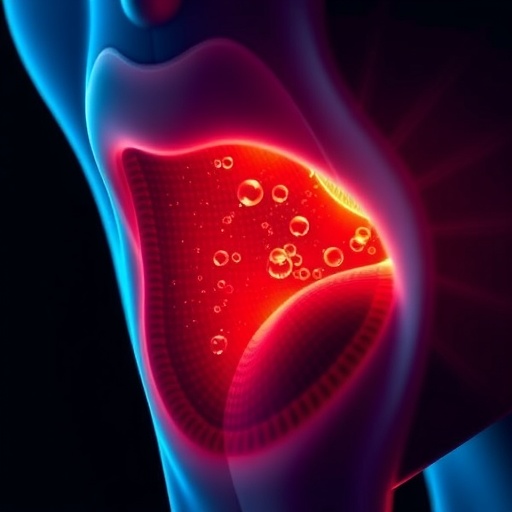AMHERST, Mass.—An interdisciplinary team led by University of Massachusetts Amherst researchers has been awarded $1.14 million over four years by the National Institutes of Health (NIH) to develop a revolutionary way of tracking body movements, with a primary application in stroke survivors’ rehabilitation and huge potential for future applications across a wide range of disciplines, health-related and beyond.
![]()
Credit: Sunghoon Lee
AMHERST, Mass.—An interdisciplinary team led by University of Massachusetts Amherst researchers has been awarded $1.14 million over four years by the National Institutes of Health (NIH) to develop a revolutionary way of tracking body movements, with a primary application in stroke survivors’ rehabilitation and huge potential for future applications across a wide range of disciplines, health-related and beyond.
More than 795,000 Americans suffer from strokes annually, and nearly 80% of stroke survivors experience some degree of upper-limb impairment. Hemiparesis, an impairment that affects one side of the body more than the other, is especially common and comes with its own unique challenges.
“When patients are discharged, they need to keep on trying to use the affected side in order to maintain the functionality that they have gained through the inpatient rehabilitation process,” says Sunghoon Ivan Lee, associate professor in the Manning College of Information and Computer Sciences and director of the Advanced Human Health Analytics Laboratory. “If they continue to rely on the stronger side, they will lose the gains they have made. That can lead to more adverse situations like falls.”
Unfortunately, determining how much a patient is using the weaker side outside of the hospital is a challenge. “Current wearable-based solutions only provide limited information,” he says. “It does not actually let clinicians know about what activities patients are actually doing while they’re going about their daily living, which is a great indication of their functional ability and also functional independence, and that is the ultimate goal of rehabilitation.”
That’s what this new sensor design seeks to answer. The sensing technology, namely Body Channel Identification, is a combination of three components. First, there are small tags (essentially smart stickers) placed on everyday objects around the patient’s home, like a light switch, for example. This tag is activated by the second component: a wearable wrist device. The tag transmits data to this device about what the patient is doing (i.e. flicking on a light). The tag and the wrist device are connected via the third component: the wearer’s own body to create a closed-loop circuit.
“Human skin is made out of conductive material, so you can think of it as a wire,” Lee explains. “We were the first group that has demonstrated that humans can be actually used as the power transfer medium. And if the power can be transmitted, that means data can be also transmitted because the wire is the same wire.”
This multi-faceted project is being worked on by an interdisciplinary team of individuals. In addition to Lee, other key investigators from UMass Amherst are Jeremy Gummeson, assistant professor of electrical and computer engineering, and Robert Jackson, professor of electrical and computer engineering. Clinical testing is being led by the Shirley Ryan AbilityLab, (formerly the Rehab Institution of Chicago), the national leader in rehabilitation facilities.
“Severe arm weakness is the most common impairment that stroke survivors face, impeding their ability to engage in everyday activities, from reaching to grasping,” says Mary Ellen Stoykov, research scientist at Shirley Ryan AbilityLab. “With this grant, our interdisciplinary team will be able to capture novel data that will shed light on how individuals with stroke engage their arms and hands in daily life, and will inform clinical interventions that have the potential to lead to better outcomes related to motor control.”
The researchers are also optimistic about the broader applications for this research. Within health, it can be applied to other conditions involving motor impairments, including traumatic brain injuries, multiple sclerosis and Parkinson’s disease.
This technology may even be used for other instances that require human-object interaction monitoring, such as interactive smart homes, human-robot interactions, addiction monitoring, medication compliance monitoring, augmented reality and remote rehabilitation programs.
Contact:
Julia Westbrook: [email protected]
Sunghoon Ivan Lee: [email protected]
Megan Washburn: [email protected]




